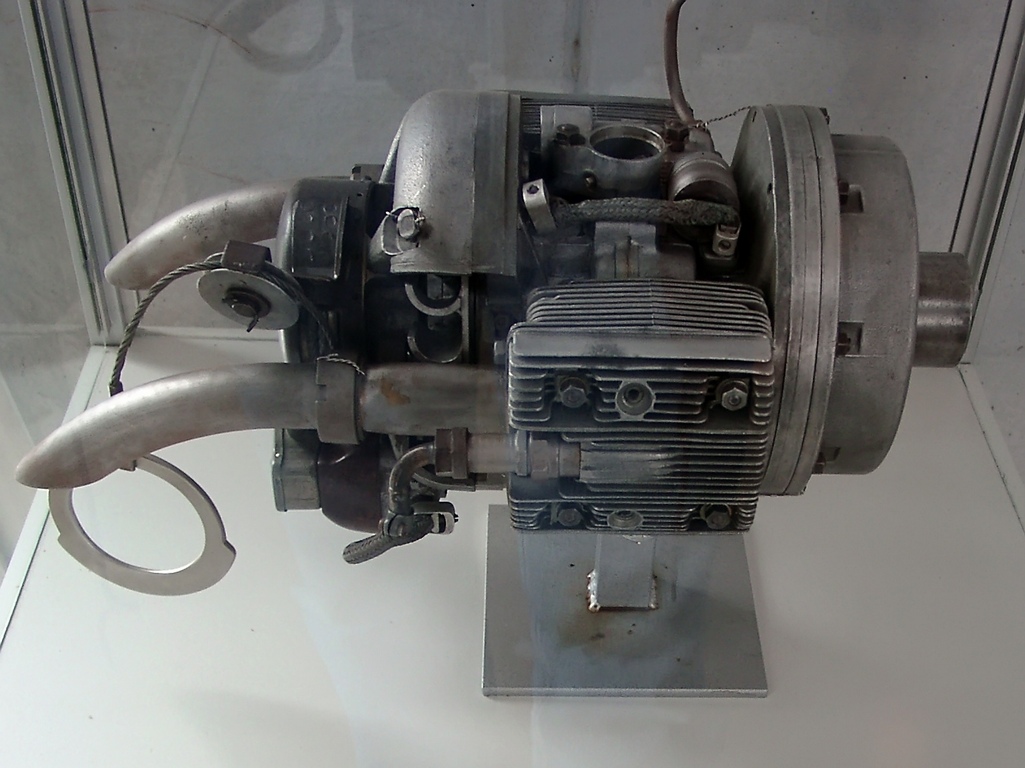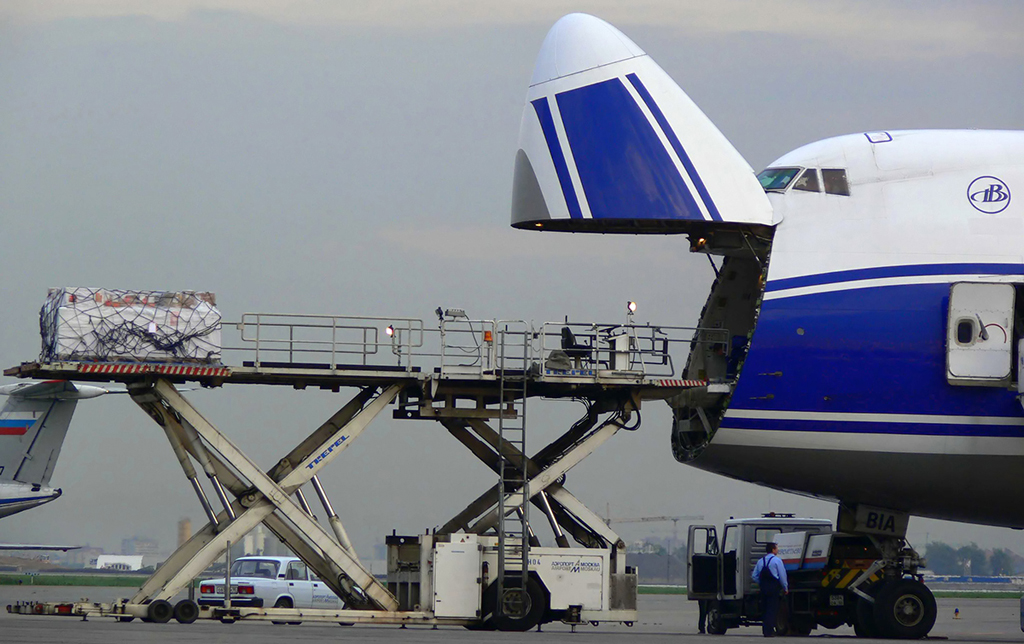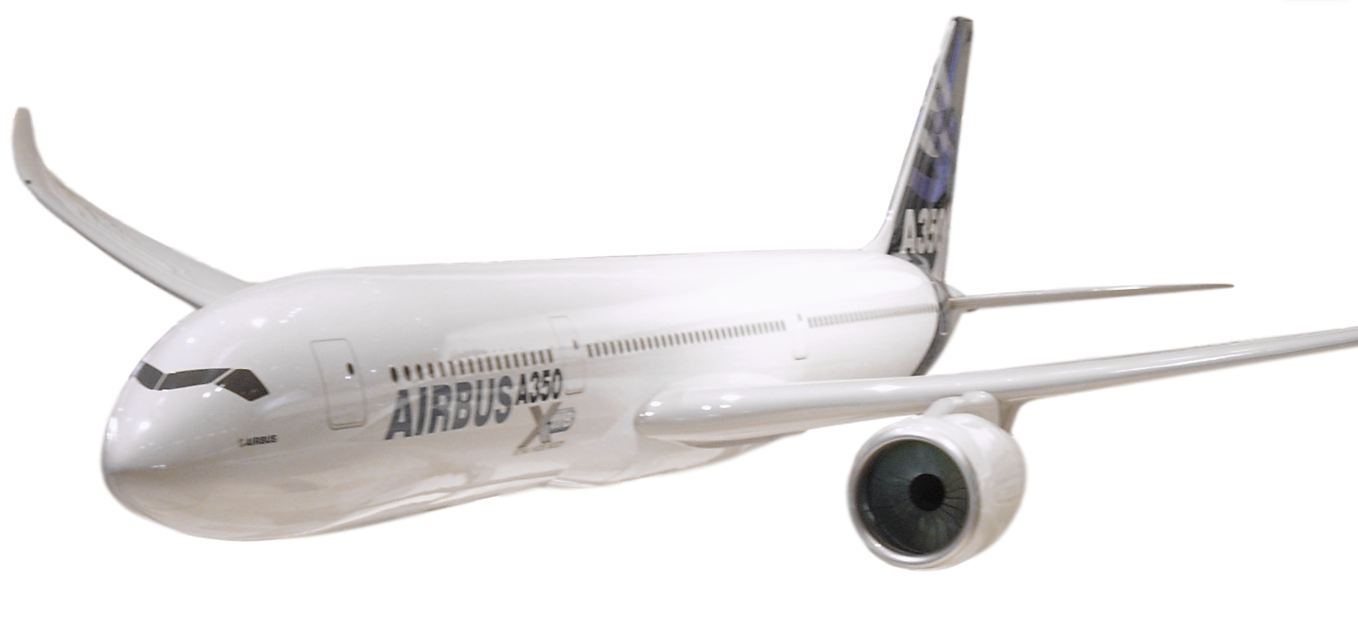|
Overall Compression Ratio
In aeronautical engineering, overall pressure ratio, or overall compression ratio, is the amount of times the pressure increases due to ram compression and the work done by the compressor stages. The compressor pressure ratio is the ratio of the stagnation pressures at the front and rear of the compressor of a gas turbine. Overall pressure ratio in a Turbofan#High-bypass turbofan, high-bypass turbofan is a function of inlet pressure ratio and compressor pressure ratio: OPR = IPR \times CPR The terms ''compression ratio'' and ''pressure ratio'' are used interchangeably. Advantages of high overall pressure ratios As can be seen in the formula for maximum theoretical thermal efficiency in an ideal Brayton cycle engine, a high pressure ratio leads to higher thermal efficiency: \eta = 1-\left(\frac\right) where PR is the pressure ratio and gamma the heat capacity ratio of the fluid, 1.4 for air. Keep in mind that pressure ratio scales exponentially with the number of compressor ... [...More Info...] [...Related Items...] OR: [Wikipedia] [Google] [Baidu] |
Aeronautical Engineering
Aerospace engineering is the primary field of engineering concerned with the development of aircraft and spacecraft. It has two major and overlapping branches: aeronautical engineering and astronautical engineering. Avionics engineering is similar, but deals with the electronics side of aerospace engineering. "Aeronautical engineering" was the original term for the field. As flight technology advanced to include vehicles operating in outer space, the broader term "aerospace engineering" has come into use. Aerospace engineering, particularly the astronautics branch, is often colloquially referred to as "rocket science". Overview Flight vehicles are subjected to demanding conditions such as those caused by changes in atmospheric pressure and temperature, with structural loads applied upon vehicle components. Consequently, they are usually the products of various technological and engineering disciplines including aerodynamics, air propulsion, avionics, materials science, st ... [...More Info...] [...Related Items...] OR: [Wikipedia] [Google] [Baidu] |
Junkers Jumo 004
The Junkers Jumo 004 was the world's first production turbojet engine in operational use, and the first successful axial compressor turbojet engine. Some 8,000 units were manufactured by Junkers in Germany late in World War II, powering the Messerschmitt Me 262 fighter and the Arado Ar 234 reconnaissance/bomber, along with prototypes, including the Horten Ho 229. Variants and copies of the engine were produced in Eastern Europe and the USSR for several years following the end of WWII. Design and development The feasibility of jet propulsion had been demonstrated in Germany in early 1937 by Hans von Ohain working with the Heinkel company. Most of the Reich Air Ministry ( RLM) remained uninterested, but Helmut Schelp and Hans Mauch saw the potential of the concept and encouraged Germany's aero engine manufacturers to begin their own programmes of jet engine development. The companies remained skeptical and little new development was carried out. In 1939 Schelp and Mauch visit ... [...More Info...] [...Related Items...] OR: [Wikipedia] [Google] [Baidu] |
Boeing 747
The Boeing 747 is a long-range wide-body aircraft, wide-body airliner designed and manufactured by Boeing Commercial Airplanes in the United States between 1968 and 2023. After the introduction of the Boeing 707, 707 in October 1958, Pan Am wanted a jet times its size, to reduce its seat cost by 30%. In 1965, Joe Sutter left the Boeing 737, 737 development program to design the 747. In April 1966, Pan Am ordered 25 Boeing 747-100 aircraft, and in late 1966, Pratt & Whitney agreed to develop the JT9D engine, a high-bypass turbofan. On September 30, 1968, the first 747 was rolled out of the custom-built Everett Plant, the world's List of largest buildings#Largest usable volume, largest building by volume. The 747's first flight took place on February 9, 1969, and the 747 was certified in December of that year. It entered service with Pan Am on January 22, 1970. The 747 was the first airplane called a "Jumbo Jet" as the first wide-body airliner. The 747 is a four-engined jet ... [...More Info...] [...Related Items...] OR: [Wikipedia] [Google] [Baidu] |
General Electric CF6
The General Electric CF6, US military designations F103 and F138, is a family of high-bypass turbofan engines produced by GE Aviation. Based on the TF39, the first high-power high-bypass jet engine, the CF6 powers a wide variety of civilian airliners. The basic engine core also powers the LM2500 and LM6000 marine and power generation turboshafts. It is gradually being replaced by the newer GEnx family. Development After developing the TF39 for the C-5 Galaxy in the late 1960s, GE offered a more powerful variant for civilian use, the CF6. GE quickly found interest in two designs being offered for a recent Eastern Airlines contract, the Lockheed L-1011 and the McDonnell Douglas DC-10. Lockheed eventually selected the Rolls-Royce RB211, but the latter stuck with the CF6 and entered service in 1971. It was also selected for versions of the Boeing 747. Since then, the CF6 has powered versions of the Airbus A300, A310 and A330, Boeing 767, Lockheed C-5M Galaxy, and McDonne ... [...More Info...] [...Related Items...] OR: [Wikipedia] [Google] [Baidu] |
Boeing 777
The Boeing 777, commonly referred to as the Triple Seven, is an American long-range wide-body airliner developed and manufactured by Boeing Commercial Airplanes. The 777 is the world's largest twinjet and the most-built wide-body airliner. The jetliner was designed to bridge the gap between Boeing's other wide body airplanes, the twin-engined 767 and quad-engined 747, and to replace aging DC-10 and L-1011 trijets. Developed in consultation with eight major airlines, the 777 program was launched in October 1990, with an order from United Airlines. The prototype aircraft rolled out in April 1994, and first flew that June. The 777 entered service with the launch operator United Airlines in June 1995. Longer-range variants were launched in 2000, and first delivered in 2004. The Triple Seven can accommodate a ten–abreast seating layout and has a typical 3-class capacity of 301 to 368 passengers, with a range of . The jetliner is recognizable for its large-diameter tur ... [...More Info...] [...Related Items...] OR: [Wikipedia] [Google] [Baidu] |
General Electric GE90
The General Electric GE90 is a family of High-bypass turbofan engine, high-bypass turbofan aircraft engines built by GE Aerospace for the Boeing 777, with thrust ratings from . It entered service with British Airways in November 1995. It is one of three engines for the 777-200 and -200ER, and the exclusive engine of the -200LR, -300ER, and 777F. It was the largest jet engine, until being surpassed in January 2020 by its successor, the General Electric GE9X, GE9X, which has a larger fan diameter by . However, the GE90-115B, the most recent variant of the GE90, is rated for a higher thrust (115,000 lbs) than the GE9X. Background In the early 1980s, GE began to develop an unducted fan (UDF) engine, which was thought to be a more fuel-efficient option to propel short-haul airliners, a compelling proposition after the 1979 oil crisis. NASA gave GE a grant in February 1984 to continue its research, eventually building the experimental General Electric GE36, GE36. One of the major inn ... [...More Info...] [...Related Items...] OR: [Wikipedia] [Google] [Baidu] |
Airbus A350 XWB
The Airbus A350 is a flight length, long-range, wide-body twin-engine airliner developed and produced by Airbus. The initial A350 design proposed in 2004, in response to the Boeing 787 Dreamliner, would have been a development of the Airbus A330 with composite wings, advanced winglets, and new efficient engines. Due to inadequate market support, Airbus switched in 2006 to a clean-sheet "XWB" (eXtra Wide Body) design, powered by two Rolls-Royce Trent XWB high bypass turbofan engines. The prototype first flew on 14 June 2013 from Toulouse, France. Type certification from the European Aviation Safety Agency (EASA) was obtained in September 2014, followed by certification from the Federal Aviation Administration (FAA) two months later. The A350 is the first Airbus aircraft largely made of carbon-fibre-reinforced polymers. The fuselage is designed around a 3-3-3 nine-across economy cross-section, an increase from the eight-across A330/A340 2-4-2 configuration. It has a common t ... [...More Info...] [...Related Items...] OR: [Wikipedia] [Google] [Baidu] |
Rolls-Royce Trent XWB
The Rolls-Royce Trent XWB is a high-bypass turbofan produced by Rolls-Royce Holdings. In July 2006, the Trent XWB was selected to exclusively power the Airbus A350. The first engine was run on 14 June 2010, it first flew on an A380 testbed on 18 February 2012, was certified in early 2013, and first flew on an A350 on 14 June 2013. It had its first in-flight shutdown on 11 September 2018 as the fleet accumulated 2.2 million flight hours. It keeps the characteristic three-shaft layout of the Rolls-Royce Trent, with a fan, an IP and HP spool. The engine has a 9.6:1 bypass ratio and a 50:1 pressure ratio. It is the most powerful member of the Trent family. Development By 2004 Airbus had been facing pressure from customers to develop a competitor to the Boeing 787 Dreamliner, so in October 2005 launched the A350, at the time an improved A330. Rolls-Royce initially offered a conventional bleed air engine variant of the Trent 1000 with a throttle-push to static thrust, the Tr ... [...More Info...] [...Related Items...] OR: [Wikipedia] [Google] [Baidu] |
Boeing 777X
The Boeing 777X is the latest series of the Long-haul, long-range, Wide-body aircraft, wide-body, Twinjet, twin-engine jetliners in the Boeing 777 family from Boeing Commercial Airplanes. The changes for 777X include General Electric GE9X engines, composite material, composite wings with folding wingtips, greater cabin width and seating capacity, and technologies from the Boeing 787. The 777X was launched in November 2013 with two variants: the 777-8 and the 777-9. The 777-8 provides seating for 395 passengers and has a range of while the 777-9 has seating for 426 passengers and a range of over . The 777X program was proposed in the early 2010s with assembly at the Boeing Everett Factory and the wings built at a new adjacent building. , there are List of Boeing 777X orders and deliveries, 503 total orders for the 777X passenger and freighter versions from 12 customers. The 777-9 first flew on January 25, 2020. Deliveries have been delayed multiple times, with the earliest plan ... [...More Info...] [...Related Items...] OR: [Wikipedia] [Google] [Baidu] |
General Electric GE9X
The General Electric GE9X is a high-bypass turbofan developed by GE Aerospace exclusively for the Boeing 777X. It first ran on the ground in April 2016 and first flew on March 13, 2018; it powered the 777-9's maiden flight in early 2020. It received its Federal Aviation Administration (FAA) type certificate on September 25, 2020. Derived from the General Electric GE90 with a larger fan, advanced materials like ceramic matrix composites (CMCs), and higher bypass and compression ratios, it was designed to improve fuel efficiency by 10% compared to the GE90. It is rated at of thrust, which is 5,000 lbf (20 kN) less than the GE90 highest thrust variant, the GE90-115, rated at . Development In February 2012, GE announced studies on a more efficient derivative of the GE90, calling it the GE9X, to power both the -8 and -9 variants of the new Boeing 777X. It was to feature the same fan diameter as the GE90-115B with thrust decreased by to a new rating of per engine. The engine ... [...More Info...] [...Related Items...] OR: [Wikipedia] [Google] [Baidu] |
Takeoff
Takeoff is the phase of flight in which an aerospace vehicle leaves the ground and becomes airborne. For aircraft traveling vertically, this is known as liftoff. For aircraft that take off horizontally, this usually involves starting with a transition from moving along the ground on a runway. For balloon (aircraft), balloons, helicopters and some specialized fixed-wing aircraft (VTOL aircraft such as the Hawker Siddeley Harrier, Harrier and the Bell Boeing V22 Osprey), no runway is needed. Horizontal Power settings For light aircraft, usually full power is used during takeoff. Large transport category (airliner) aircraft may use a flex temp, reduced power for takeoff, where less than full power is applied in order to prolong engine life, reduce maintenance costs and reduce noise emissions. In some emergency cases, the power used can then be increased to increase the aircraft's performance. Before takeoff, the engines, particularly piston engines, are routinely run up at high po ... [...More Info...] [...Related Items...] OR: [Wikipedia] [Google] [Baidu] |
Climb (aeronautics)
An Iberia London_Heathrow_Airport.html" ;"title="Airbus A321 on the climbout from London Heathrow Airport">Airbus A321 on the climbout from London Heathrow Airport In aviation, a climb or ascent is the operation of increasing the altitude of an aircraft. It is also the logical phase of a typical flight (the ''climb phase'' or ''climbout'') following [ akeoff and preceding the cruise. During the climb phase there is an increase in altitude to a predetermined level. The opposite of a climb is a '' descent''. Climb operation A steady climb is carried out by using excess thrust, the amount by which the thrust from the power plant exceeds the drag on the aircraft. L. J. Clancy (1975): ''Aerodynamics''. Pitman Publishing Limited, London, The aircraft will climb steadily until the excess thrust falls to zero. Excess thrust might fall to zero as a result of the pilot's deliberate action in control of the output of the engines, or as the engines' response to reducing air density. ... [...More Info...] [...Related Items...] OR: [Wikipedia] [Google] [Baidu] |








